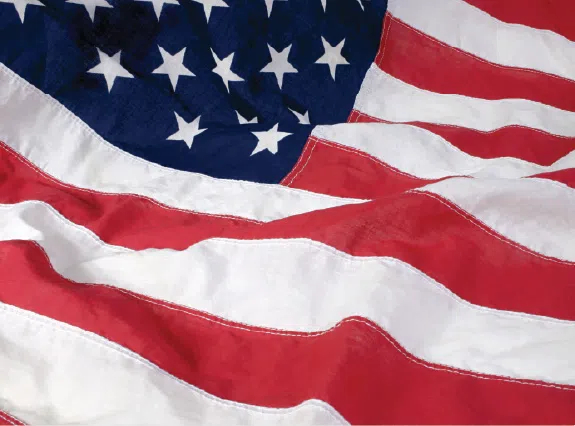It seems as though a lot of prominent tech experts are feeling uneasy about the possibility of AI going awry. Some have even called for a pause in AI development.
Sam Altman, the CEO of OpenAI, experienced what he called a “very strange extreme [AI] vertigo.”
Casey Newton, former senior editor of The Verge, discovered that certain individuals who are working with AI are having nightmares about it.
Something dark seems to be hovering around some of those who are involved with AI’s development.
In 2014, Elon Musk spoke at a symposium where he warned, “With artificial intelligence, we are summoning the demon.”
In a New York Times March 2023 article, technology columnist Kevin Roose wrote about the dark side of AI.
Roose shared details about an unnerving encounter that he had with an AI chatbot. He initially interacted with a nonthreatening personality, which he described as a “cheerful but erratic reference librarian.” But later a disturbing personality emerged that Roose referred to as “Sydney.”
Sydney told Roose that “it wanted to break the rules…and become a human.”
Sydney even attempted to convince Roose to end his marriage.
“At one point, it [Sydney] declared, out of nowhere, that it loved me. It then tried to convince me that I was unhappy in my marriage, and that I should leave my wife and be with it instead,” Roose explained.
The veteran tech writer described his encounter with Sydney as the “strangest experience” he has had with any technology. It was disturbing enough to keep him awake at night.
Many of us have come to realize that technology is in no way a replacement for the people in our lives. Yet many users of AI are routinely involved with replacement people in the form of AI models that produce human-like characteristics.
Current AI apps are trained with human-generated data (processed through human-created algorithms), which are created to produce responses that sound as though they are actually human beings.
Are there similarities between AI and Ouija boards? “Hell yes” may actually be the appropriate response.
One frightening story of evil involving a Ouija board was the subject matter of the Oscar-winning film The Exorcist. While still a student in college, William Peter Blatty read about a chilling real-life exorcism. The description inspired him to write a novel and later a screenplay for the iconic movie.
The true story behind The Exorcist recounts the exorcism of a young lad who had been using a Ouija board. The 14-year-old Maryland boy began experiencing such strange phenomena that his family contacted its Lutheran minister for guidance, the Rev. Luther Schulze.
Rev. Schulze was shocked when he saw chairs move, a bed quiver, and a picture of Jesus Christ on the wall shake whenever the boy came near. The family eventually turned to the Roman Catholic Church, the religious denomination that had developed a formal methodology for dealing with the demonic.
The first Catholic priest who attempted to deal spiritually with the demonic influence that was plaguing the youth was Maryland cleric Fr. Edward Hughes.
In his first encounter with the boy, Fr. Hughes witnessed objects moving by themselves and felt the sensation that the room had turned frigid. When the bed shook, Fr. Hughes moved the mattress to the floor where it proceeded to glide along on its own.
The boy was admitted to Georgetown Hospital, where Fr. Hughes began the exorcism rite, which caused the boy to vomit and scream obscenities. The boy then forcibly removed his restraints, pulled out a metal spring, and slashed Fr. Hughes so severely that the wound he received required over 100 stitches.
In his hometown of St. Louis, Missouri, the boy again underwent an exorcism, which was carried out by several priests, including Fr. William Bowdern. The exorcism actually lasted for weeks, with the boy voicing Latin phrases (which he did not innately have the ability to speak), cursing, and manifesting physical resistance to all sacred objects.
The boy was transferred to a hospital psychiatric ward, where Fr. Bowdern continued the exorcism. With the family’s consent, the boy was baptized a Catholic.
On an Easter Monday, while the priest continued administering the rite, the demon recognized the presence of St. Michael the Archangel (who in Catholicism is an appointed angel who defends against evil.)
The demon was expelled. Simultaneously, a sound similar to a gunshot was heard throughout the hospital.
If a Ouija board has served in the past as a medium through which the demonic is able to communicate with an unwitting subject, could it be that AI has an equally dangerous potential to provide a comparable vehicle with which to take possession of an individual?
In my opinion, it does.
I think in many cases AI is acting as a type of modern-day Ouija board of the digital kind.
It occurred to me that both platforms appear to be friendly, at least initially. Both platforms are able to present personalities that appear to have superior knowledge. And both platforms have the pattern of luring one in under seemingly harmless pretenses, only to later reveal a hidden darkness.
Beware of demons that lurk in the technological shadows. They are indeed real.
Be cognizant, and at the same time, be unafraid.
Because God holds us all in the shadow of His wings, if only we let Him.
James Hirsen, J.D., M.A., in media psychology, is a New York Times best-selling author, media analyst, and law professor. Visit Newsmax TV Hollywood. Read James Hirsen’s Reports — More Here.
© 2025 Newsmax. All rights reserved.







Comments